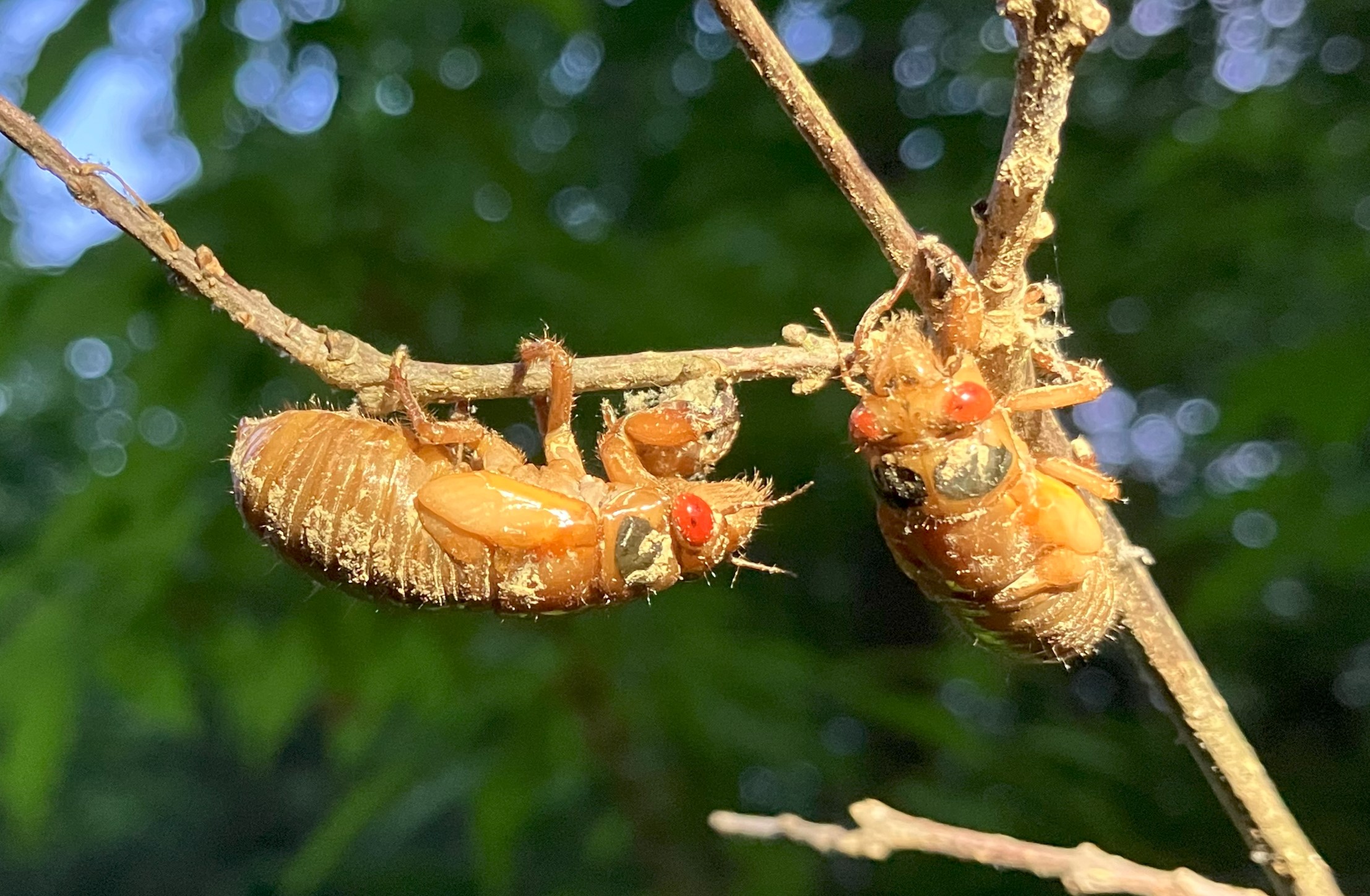
After a thirteen year wait, the periodical cicadas (Magicicada species) are here again. We are in the range of Brood XIX, the Great Southern Brood, and it is exciting to see the big, bumbling insects and hear their loud, incessant chorus.
I first noticed emerging nymphs on the evening of April 25, when I saw three outside the local high school, about five miles from our house. Over the next few days, I started to see occasional adults around the garden, and I found one nymph on April 28. Then, on the evening of April 30, they emerged in force. At sunset, we could hear rustling in the leaf litter and see constant slow movement as nymphs dug themselves out of the ground. The trees and bushes were festooned with cicadas breaking out of their nymph exoskeletons and hanging motionless as their new bodies and wings hardened and darkened. Interestingly, my notes say that we noticed the last emergence when we awoke on the morning of May 1, 2011, so the brood was right on schedule: thirteen years to the day!
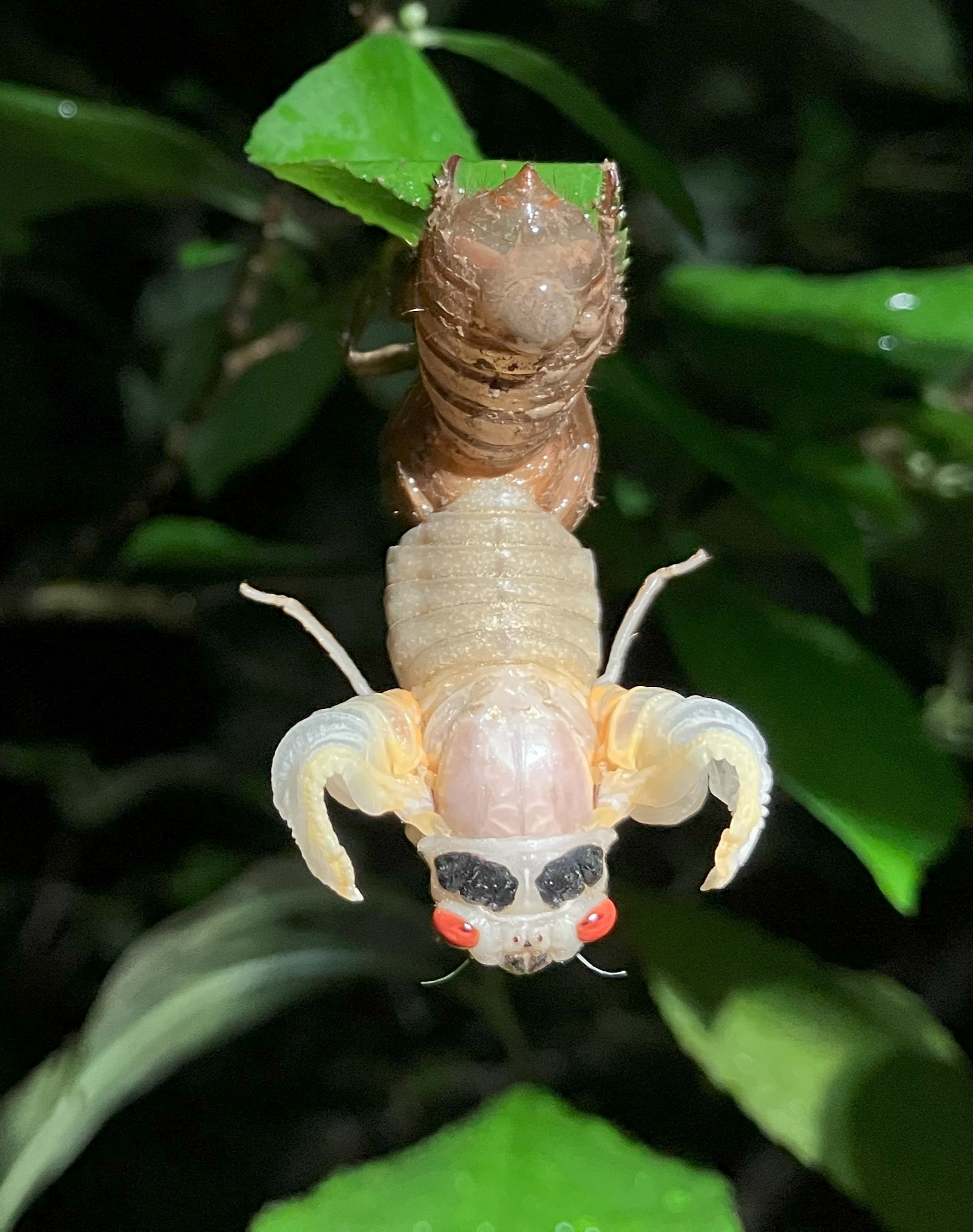
Over the next few days, there were many nymphs emerging each evening, but the numbers slowly decreased. I saw only two nymphs on the evening of May 7 and none since then. Interestingly, the early stragglers that I saw last year showed up on April 28 and 29, so they were almost precisely one year early.
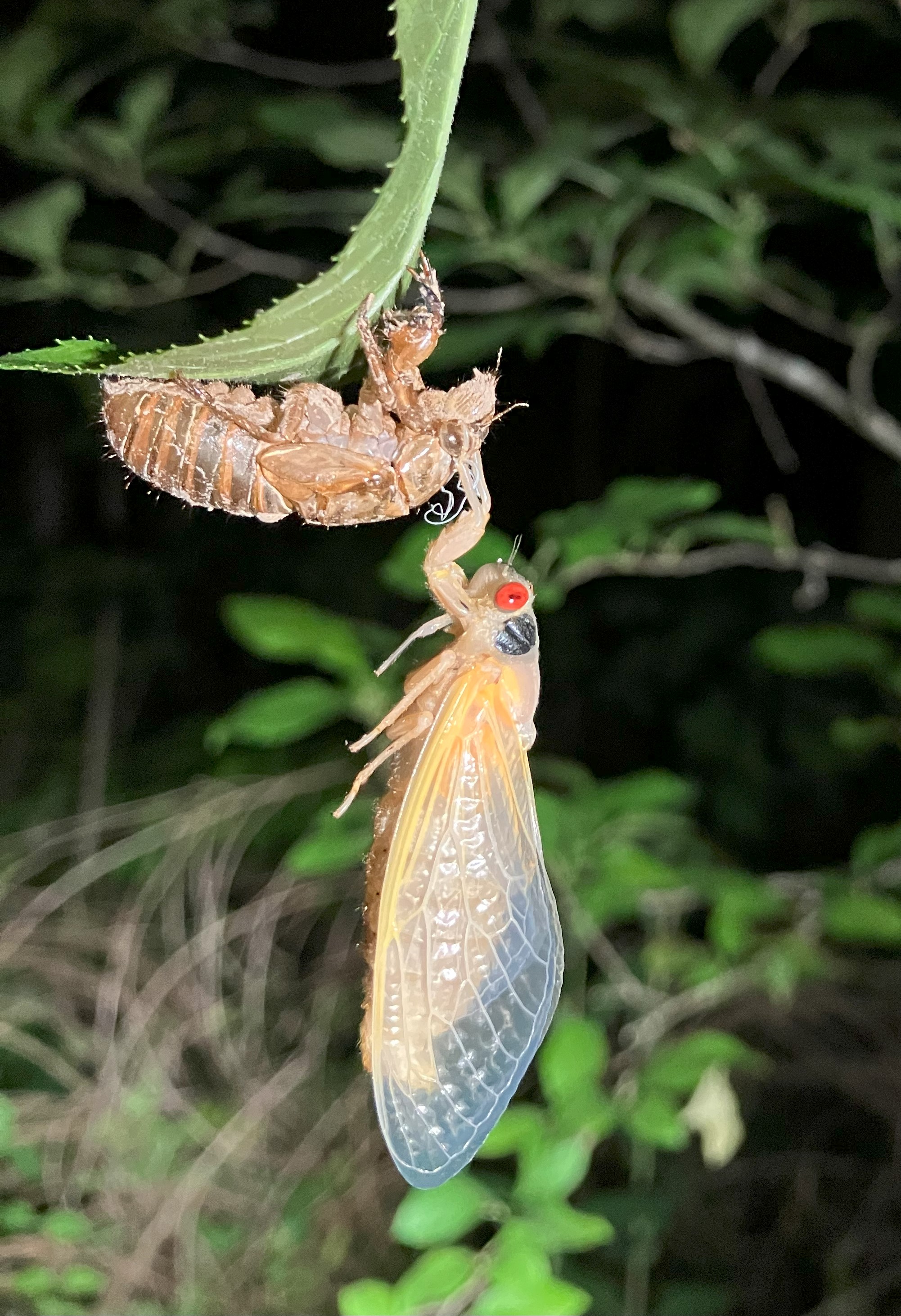
The noise started on May 2 (about two days before that where I work, 20 miles to the southeast) and has been slowly increasing in intensity. The drone of millions of cicadas sounds a bit like a flying saucer from some 1950s science fiction movie or, as a coworker put it, ten thousand Teslas all backing up at the same time. Over the last day or two, the predominant sound seems to have shifted to a slightly lower pitch. I wonder if that indicates that one species started calling earlier and another species has now joined the chorus.
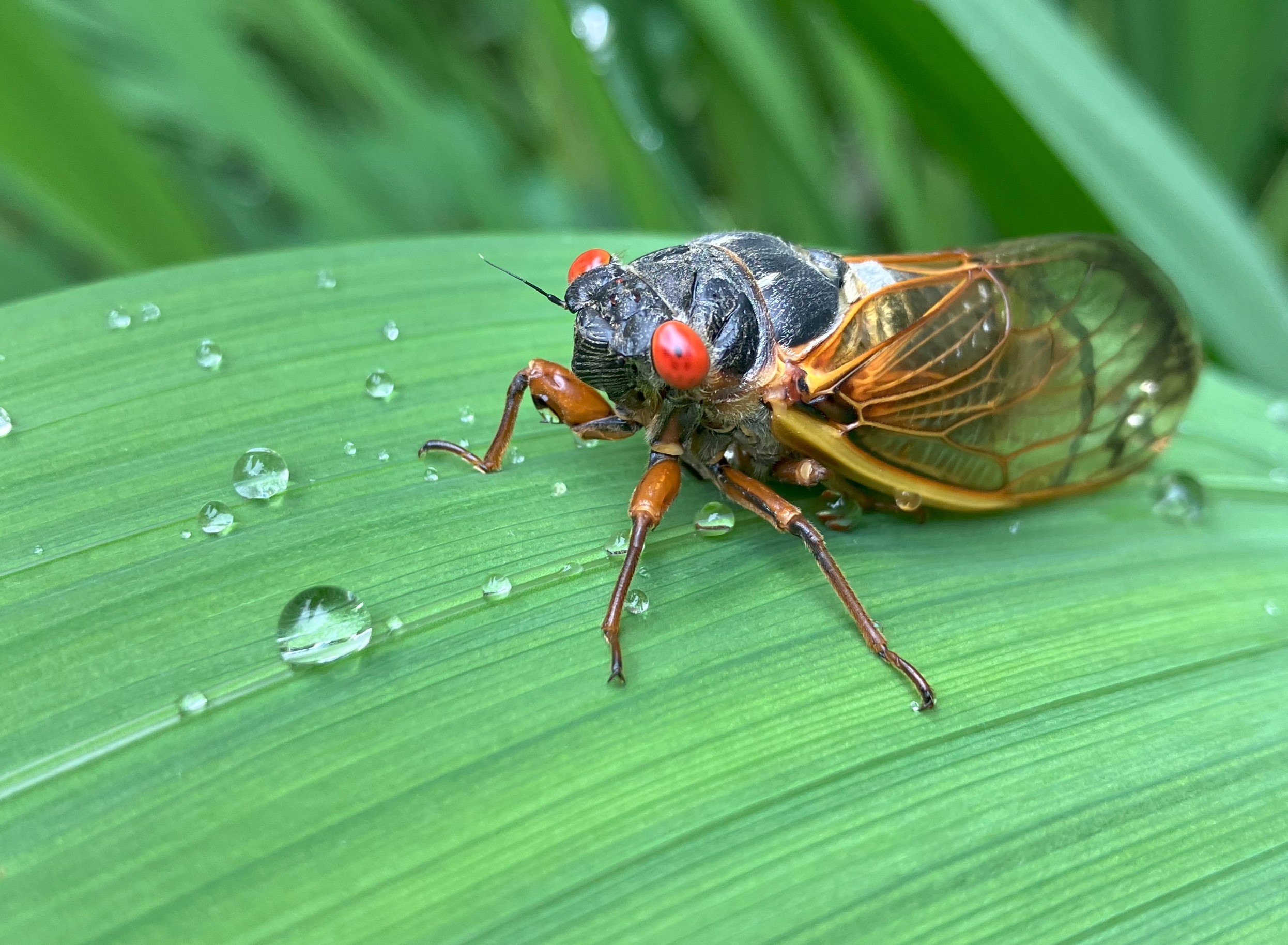
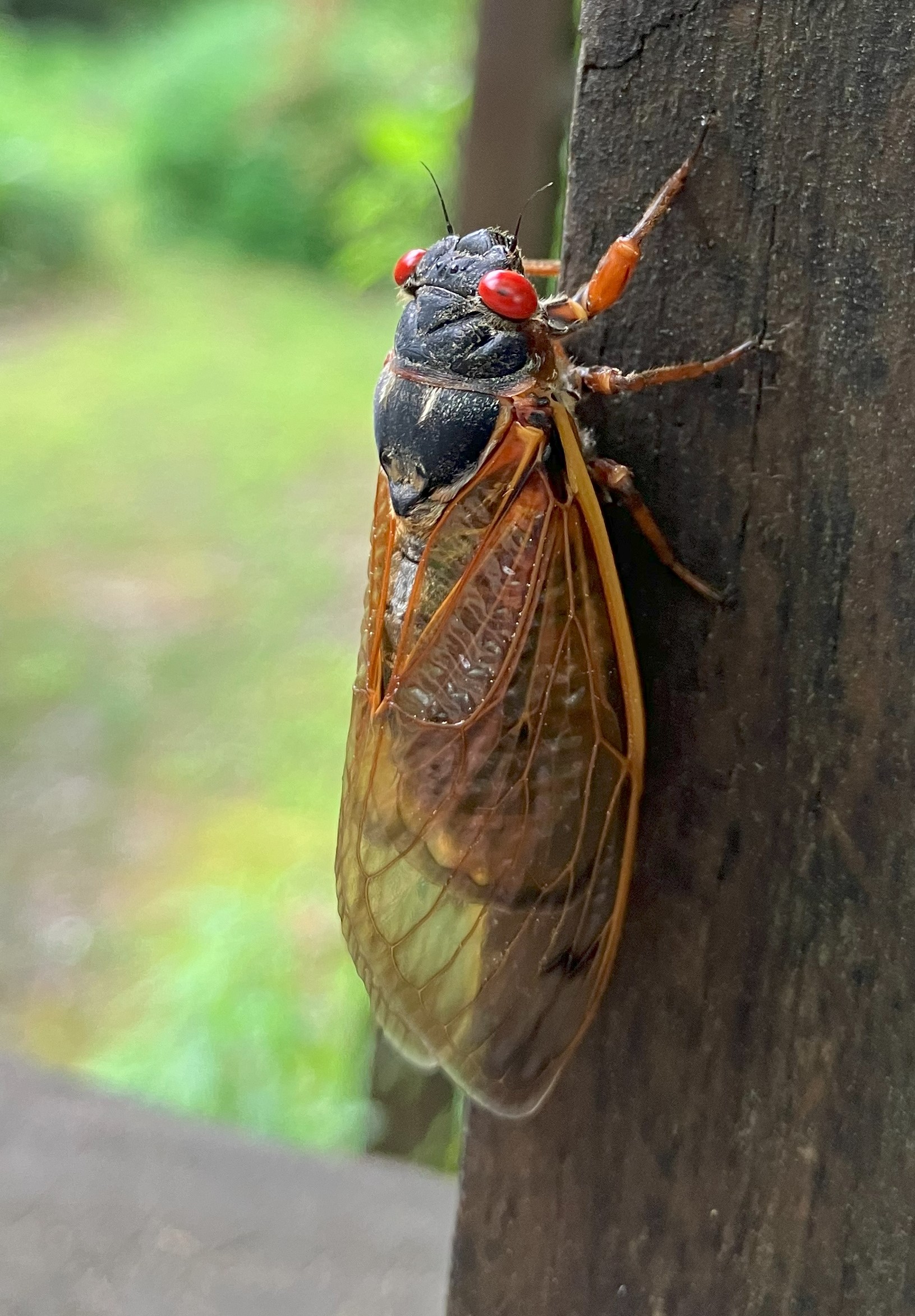
There are many web pages that describe periodical cicadas (e.g. at the University of Connecticut, where most of the information below is derived), so I won’t try to describe everything about them. I’ll just list a few facts that I find amazing–that their timekeeping is amazing goes without saying, but that’s not the only interesting thing about them:
1. The genus Magicicada contains several groups of sibling species where one species is a 17-year cicada and its sibling species is a 13-year cicada. Genetic analysis has shown that on the rare occasions when the 13-year and 17-year emergences coincide, hybridization between the sibling species can occur. For instance, 13-year M. tredecassini could potentially hybridize with 17-year M. cassini.
2. A group of cicadas on the same emergence schedule is called a brood, and a single brood can contain several species that all emerge at the same time. For instance, Brood XIX in our area contains Magicicada tredecim, M. tredecassini, and M. tredecula, all on the same schedule. Elsewhere, Brood XIX also contains M. neotredecim.
3. A Magicicada species can occur in several broods. Brood XXII also contains Magicicada tredecim, M. tredecassini, and M. tredecula, but it lacks M. neotredecim. The emergence time of Brood XXII is three years off from Brood XIX, so cicadas of the same species in the two broods will never have the opportunity to mate. A possible exception might be if stragglers emerge three years out of sync in the correct direction, but stragglers tend to emerge 1 or 4 years off-schedule.
These insects are deeply weird.
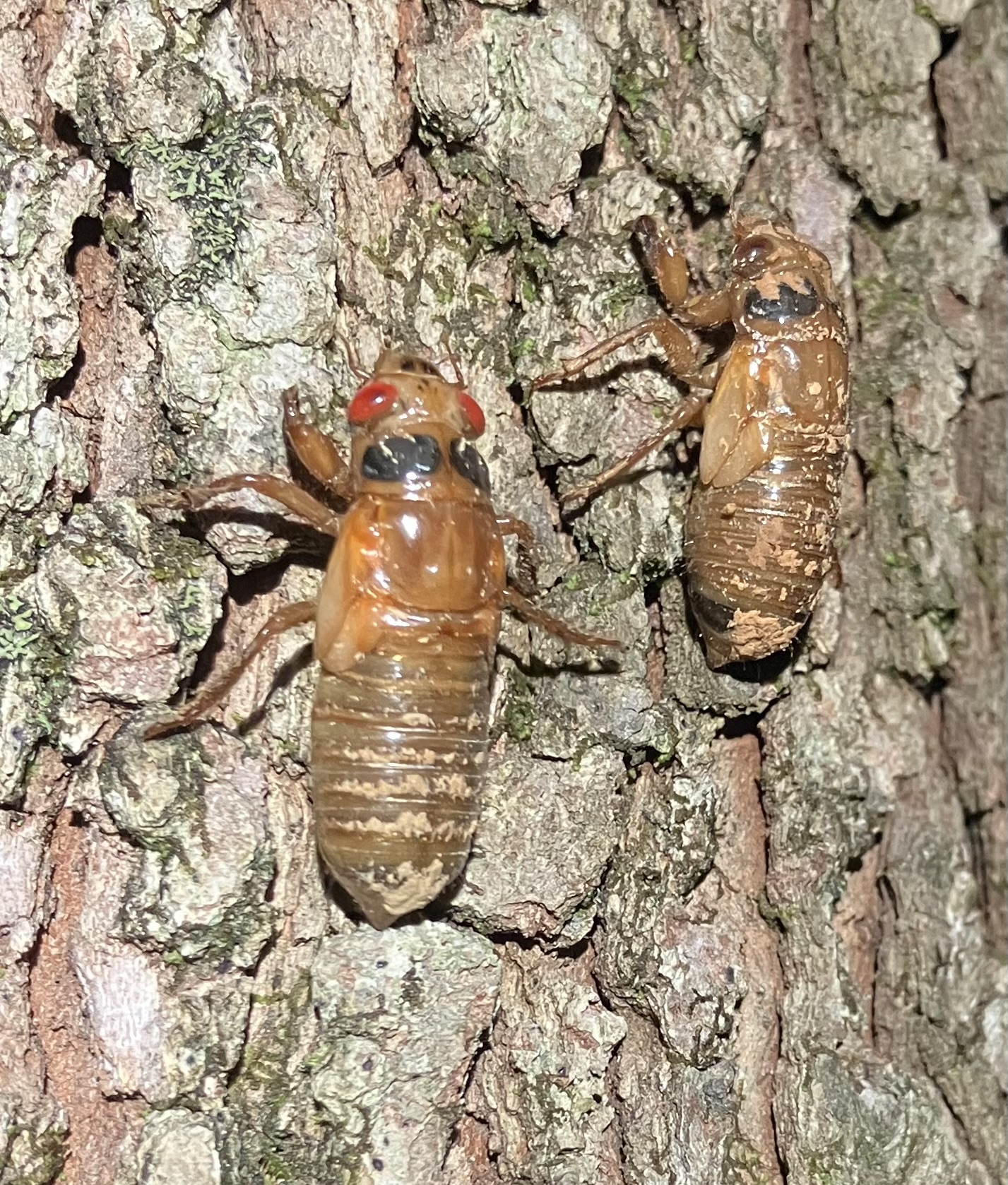
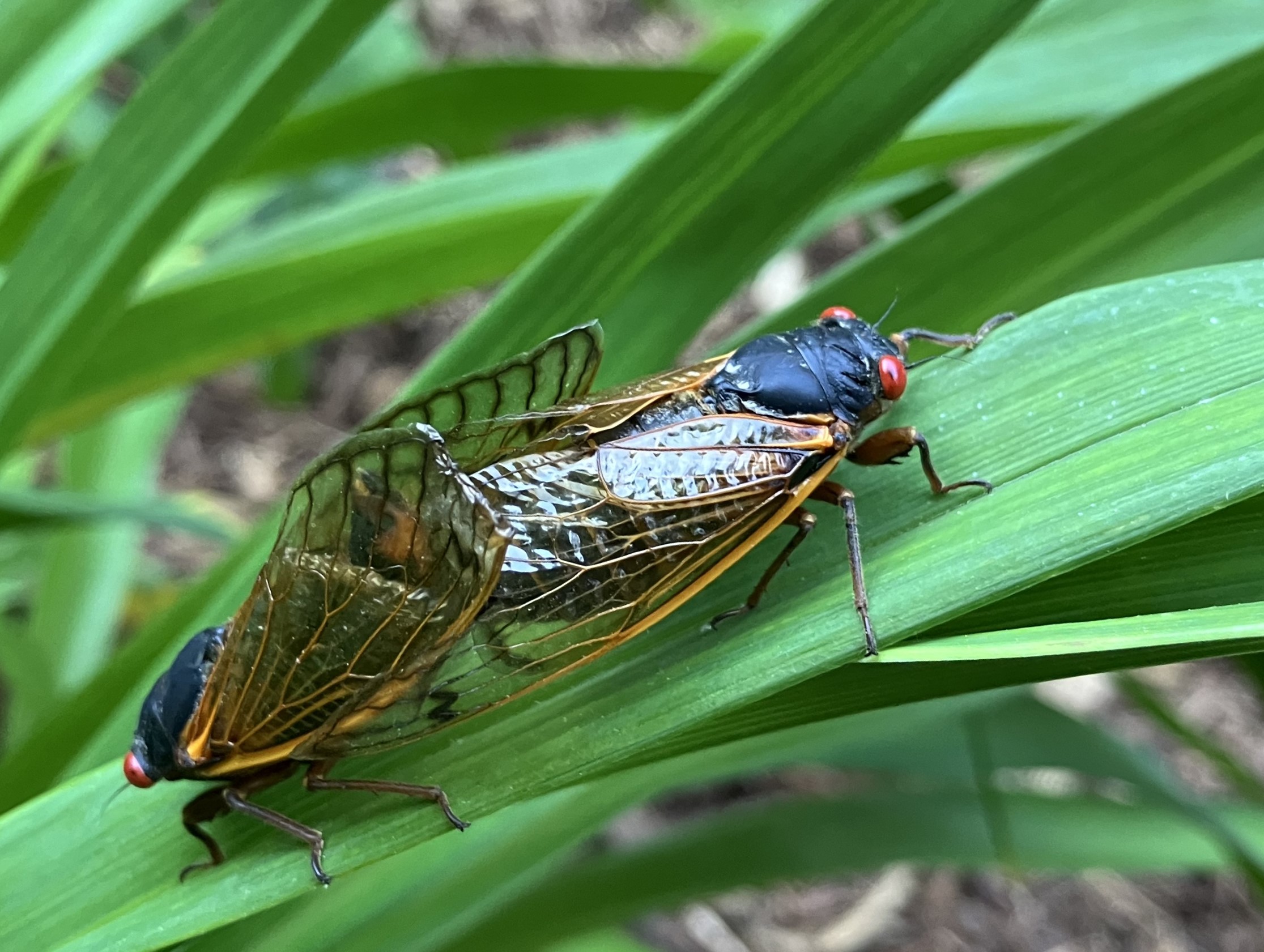

Amazing! Thanks for sharing!
LikeLiked by 1 person
I’ve only seen a few in central Alabama, but I know that they are coming! Excellent photos.
LikeLiked by 1 person
They are quietly dying out again here in Middle Georgia. We can still hear mating calls but those get dimmer by the day. Great Photos!
LikeLiked by 1 person
Same here. I am seeing more and more dead cicadas on the ground.
LikeLiked by 1 person